
The Huawei Ascend P6 is the Chinese company's latest flagship smartphone, and is the worlds slimmest, at just 6.18mm thick.
However, while flagship for Huawei, the Ascend P6 is more of a premium mid-range handset in terms of features and design. Its screen is 720p rather than 1080p and, quite astonishingly considering the time of its launch, it lacks 4G LTE, but on the other hand its chassis is finely crafted from aluminium. To find out just what the deal is, we got hands on.
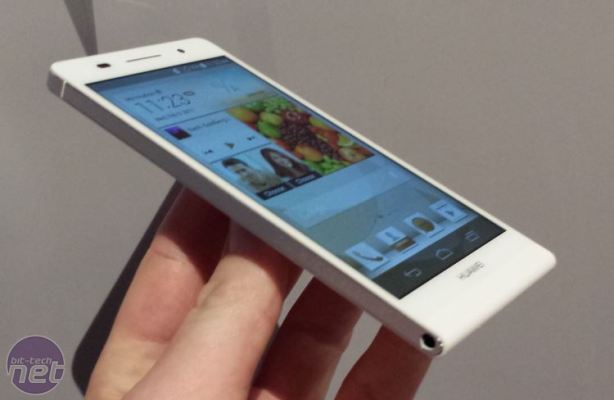
One thing that is clear about the Huawei Ascend P6 is the influence from Apple. This phone sports machined aluminium sides and back and really could be mistaken for the iPhone 5 at a glance.
However, similarities apart, this is a lovely handset. That aluminium construction lends the phone a near iPhone 5-equalling level of build quality that just feels great in the hand. Also helping immensely are the proportions of the phone. While the record-breaking 6.18mm slimness we could take or leave - though notably we didn't find it so thin as to be unwieldy - the narrowness makes the phone sit nice and snug in the hand. In comparison the Galaxy S4 is nearly 5mm wider and 6mm taller - that may not sound like a lot but in the hand it makes quite a difference.
This size difference may well be somewhat down to the smaller screen that the P6 uses but in fact that just highlights another way in which this phone trumps the S4 for ergonomics. The smaller 4.7in screen combined with the smaller body makes it significantly easier to get to grips with.
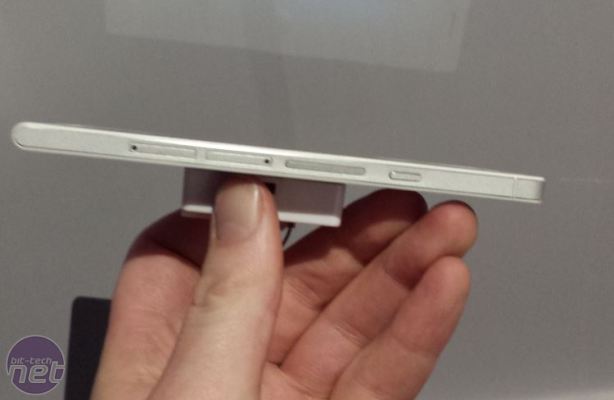
Even better are the main buttons that are ranged down the right edge of the phone. Up top is the power button while below is the volume. Both are perfectly placed so as to fall easily under finger or thumb, have just the right level of click and are nicely machined from aluminium - we're talking class-leading stuff here.
We're also fans of the use of on-screen buttons for Home, Back and Multi-tasking. Yes, it means you loose some screen space in some scenarios but equally it means there's a decent amount of space below the screen to rest your thumb and grip the phone, unlike on the Galaxy S4 in particular.
The good news continues with the addition of a microSD slot that allows for cheap and simple upgrading of the phone's storage.
However, not all is rosy. For a start the battery is inaccessible without dismantling the phone. Then there's the placement of the charging socket, which is on the top edge - ever heard of a phone dock Huawei? But the worst is where Huawei has placed the headphone socket: right at the bottom of the left edge. This means the headphone cable gets in the way in almost every conceivable situation that the phone finds itself in - in the hand, in the pocket, when gaming...
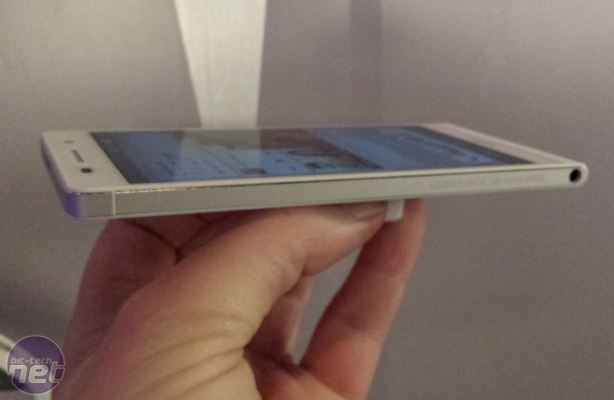
Although the P6 lacks a 1080p screen, in use it doesn't feel remotely lacking (indeed there's arguably an advantage of a slightly lower resolution screen as it requires less power to run and needs less processing power). Its 720p LCD screen is still very sharp (it's basically iPhone Retina matching) and uses the latest laminated screen manufacturing techniques such that the image appears right on the surface, rather than below the front glass. The result is superb viewing angles and bright colours. How it fares in darker lighting conditions when watching a video, we'll have to wait and see.
As for the phone's interface, it felt suitably speedy, thanks to its quad-core 1.5GHz chip (Huawei K3V2) and the use of Android 4.2.2. The look and feel is very different to stock Android as Huawei has gone to town customising it - and we had precious little time to really get to grips with it - but from what we could see it was largely cosmetic and all the key functions still work as any users of vanilla Android would expect.
Huawei was certainly keen to talk up the many funky features that its Emotion UI includes but five minutes at a press event is hardly time enough to do any of them justice.
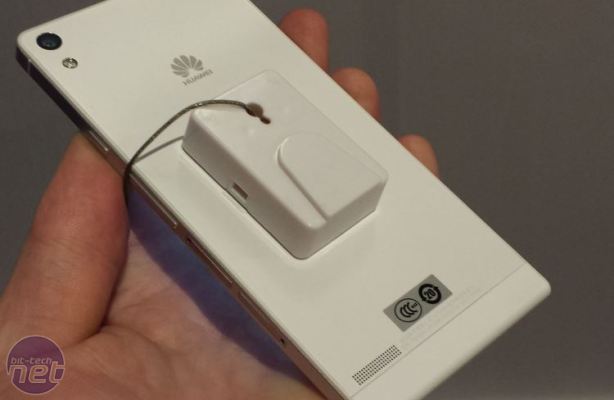
Likewise the rear camera, which is an 8megapixel BSI model. With an F2.0 lens, it has a faster optic than both the iPhone 5 and Samsung Galaxy S4. While this may sound impressive, the HTC One had a equally fast lens and that phone's camera has far from lived up to expectations.
Taking a few snaps with the P6, the camera seems nice and speedy in operation with a clean interface - and that extra thumb space really helps for when holding the phone in landscape orientation. When it comes to image quality, we'll have to wait and see
All told, from what we've seen so far, the Huawei Ascend P6 is going to be a phone well worth considering if it really does come to market at around £300-£350. It's in fact a shame there are a few slipups like the headphone socket placement as without those it could have enough going for it to take on the likes of the HTC One, iPhone 5 or Galaxy S4 right at the top of the smartphone league.
However, while flagship for Huawei, the Ascend P6 is more of a premium mid-range handset in terms of features and design. Its screen is 720p rather than 1080p and, quite astonishingly considering the time of its launch, it lacks 4G LTE, but on the other hand its chassis is finely crafted from aluminium. To find out just what the deal is, we got hands on.

One thing that is clear about the Huawei Ascend P6 is the influence from Apple. This phone sports machined aluminium sides and back and really could be mistaken for the iPhone 5 at a glance.
However, similarities apart, this is a lovely handset. That aluminium construction lends the phone a near iPhone 5-equalling level of build quality that just feels great in the hand. Also helping immensely are the proportions of the phone. While the record-breaking 6.18mm slimness we could take or leave - though notably we didn't find it so thin as to be unwieldy - the narrowness makes the phone sit nice and snug in the hand. In comparison the Galaxy S4 is nearly 5mm wider and 6mm taller - that may not sound like a lot but in the hand it makes quite a difference.
This size difference may well be somewhat down to the smaller screen that the P6 uses but in fact that just highlights another way in which this phone trumps the S4 for ergonomics. The smaller 4.7in screen combined with the smaller body makes it significantly easier to get to grips with.

Even better are the main buttons that are ranged down the right edge of the phone. Up top is the power button while below is the volume. Both are perfectly placed so as to fall easily under finger or thumb, have just the right level of click and are nicely machined from aluminium - we're talking class-leading stuff here.
We're also fans of the use of on-screen buttons for Home, Back and Multi-tasking. Yes, it means you loose some screen space in some scenarios but equally it means there's a decent amount of space below the screen to rest your thumb and grip the phone, unlike on the Galaxy S4 in particular.
The good news continues with the addition of a microSD slot that allows for cheap and simple upgrading of the phone's storage.
However, not all is rosy. For a start the battery is inaccessible without dismantling the phone. Then there's the placement of the charging socket, which is on the top edge - ever heard of a phone dock Huawei? But the worst is where Huawei has placed the headphone socket: right at the bottom of the left edge. This means the headphone cable gets in the way in almost every conceivable situation that the phone finds itself in - in the hand, in the pocket, when gaming...

Although the P6 lacks a 1080p screen, in use it doesn't feel remotely lacking (indeed there's arguably an advantage of a slightly lower resolution screen as it requires less power to run and needs less processing power). Its 720p LCD screen is still very sharp (it's basically iPhone Retina matching) and uses the latest laminated screen manufacturing techniques such that the image appears right on the surface, rather than below the front glass. The result is superb viewing angles and bright colours. How it fares in darker lighting conditions when watching a video, we'll have to wait and see.
As for the phone's interface, it felt suitably speedy, thanks to its quad-core 1.5GHz chip (Huawei K3V2) and the use of Android 4.2.2. The look and feel is very different to stock Android as Huawei has gone to town customising it - and we had precious little time to really get to grips with it - but from what we could see it was largely cosmetic and all the key functions still work as any users of vanilla Android would expect.
Huawei was certainly keen to talk up the many funky features that its Emotion UI includes but five minutes at a press event is hardly time enough to do any of them justice.

Likewise the rear camera, which is an 8megapixel BSI model. With an F2.0 lens, it has a faster optic than both the iPhone 5 and Samsung Galaxy S4. While this may sound impressive, the HTC One had a equally fast lens and that phone's camera has far from lived up to expectations.
Taking a few snaps with the P6, the camera seems nice and speedy in operation with a clean interface - and that extra thumb space really helps for when holding the phone in landscape orientation. When it comes to image quality, we'll have to wait and see
All told, from what we've seen so far, the Huawei Ascend P6 is going to be a phone well worth considering if it really does come to market at around £300-£350. It's in fact a shame there are a few slipups like the headphone socket placement as without those it could have enough going for it to take on the likes of the HTC One, iPhone 5 or Galaxy S4 right at the top of the smartphone league.

MSI MPG Velox 100R Chassis Review
October 14 2021 | 15:04

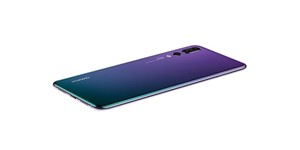






Want to comment? Please log in.